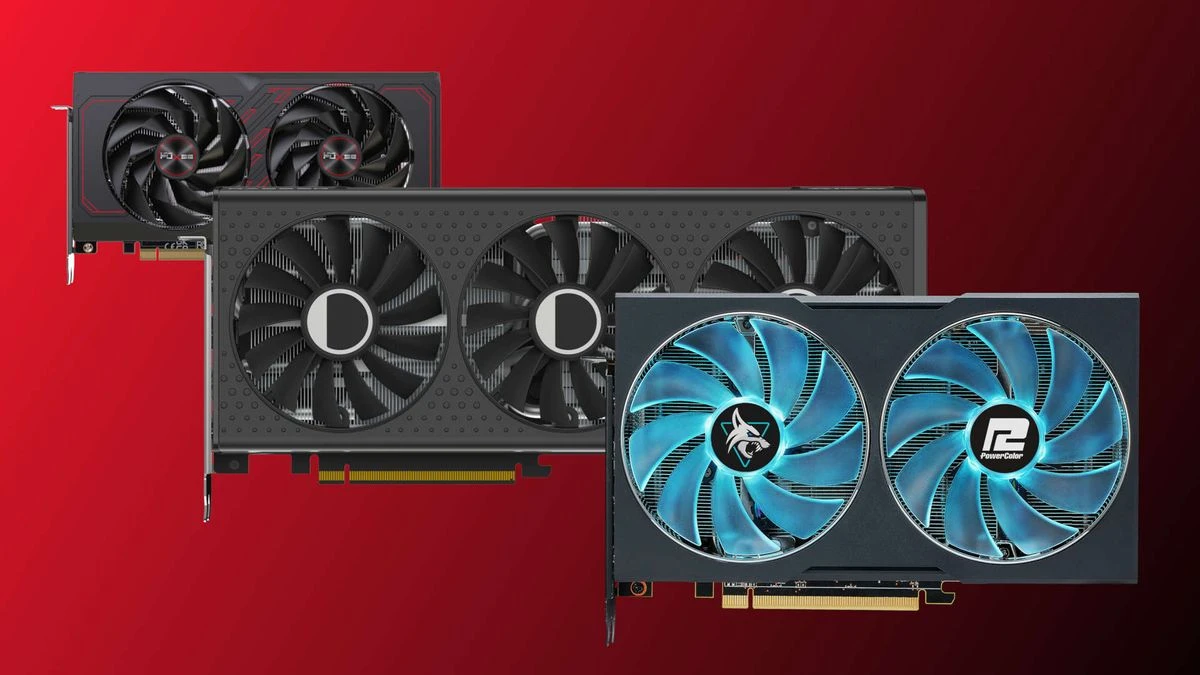AMD's RDNA 4 gaming-GPUs-for-the-people expected to launch at CES in January
AMD will launch its new budget-friendly RDNA graphics cards, designed to reclaim major market share from Nvidia at the CES show, in January. Benchlife (via Igor's Lab), says AMD's new mainstream GPUs will be available six months before Nvidia's competitors.
According to a Taiwanese website, graphic card manufacturers, also known as AIBs, or add-in boards, have started boot testing their RDNA4 cards using AMD Navi 48 and Navi44 GPUs in preparation of that CES launch.
AMD confirmed recently, as Andy reported a few days ago that RDNA 4 is not aimed at the high-end. AMD wants to make the new GPUs affordable for millions of gamers and not just those who can afford Porsches or Ferraris.
Jack Huyhn, senior vice president and general manger of AMD's Computing and Graphics Business Group, also explained that AMD's GPU share would be increased from the current 19% to as high as 40% or even 50%.
It's true that, given that enthusiast-class cards make up only a small portion of the market. Any attempt to gain this much market share would come down to selling more mainstream gaming graphics card. The only question now is how to get there.
AMD's obvious strategy, and what it appears to be doing, is to focus on the mainstream market, making the best GPU at a reasonable price that more gamers can afford, while allowing Nvidia the opportunity to dominate the high-end market, which might be lucrative, but does not include many gamers.
Huyhn says AMD must be able show game developers how many gamers use AMD GPUs to encourage them into putting the effort in optimising for AMD graphics.
All of this makes perfect sense. If AMD does indeed announce RDNA 4 at the CES in January, it's likely that the GPUs will be available months before the cheaper members of the Nvidia RTX series, which could not appear until June or July.
AMD's plan is well thought out. But that doesn't necessarily mean it will succeed. AMD's struggles to compete with Intel in the CPU market is proof enough.
AMD's CPUs returned to being competitive with the launch of Ryzen CPUs in March 2017. Mercury Research estimates that when the first Zen 1 chips were released, AMD had a roughly 12% share of the desktop PC processor market. The latest figures for AMD show that the company has a 23% market share in the second quarter of the year.
It's a significant improvement. After seven years of hard work and good products, it's only 11% more. Other words, AMD doesn't suddenly gain huge market share by producing good chips.
You might even expect the "stickiness" of the market to be stronger for graphics. Nvidia dominates the GPU market. Graphics products are also more complex than CPUs. While CPUs were mainly a performance-based product, with consumers only needing to compare a handful of benchmarks, graphics is a much more complicated product.
Do you care about the performance of raster rendering? What is your opinion of ray tracing technology? What about frame generation and upscaling? Nvidia is undoubtedly the leader in terms of features. Nvidia was the first to implement hardware ray-tracing into its GPUs, and it remains more performant in this class of rendering. It has also led the way in innovation for upscaling, frame generation and other technologies.
Even if AMD launches RDNA 4 in January and the new GPUs have a strong performance and value proposition it will still be difficult for AMD to steal Nvidia's market share. It will probably take several generations of highly-competitive GPUs to chip away both Nvidia’s market share and mindshare.
It's worth noting that AMD's new strategy of targeting the mainstream could be a combination of pragmatism and strategy. It seems that the new Navi 48/44 GPUs are monolithic, signaling a temporary backtrack from the chiplet approach which debuted with RDNA 4 GPUs such as the Radeon RX RX 7900XTX and RX RX RX 7800XT.
Other than that, the real reason AMD hasn't launched a high-end RDNA 4 graphics card is because it relied on a more advanced chiplet strategy for the high end of this generation but couldn't make it work.
Jack Huyhn, AMD's Jack Huyhn, implied that AMD would return to high-end graphic design if chiplet technology was adopted. It's hard to tell what AMD's new approach was based on the outside. What is undeniable, however, is that AMD will most likely take a gradual approach to achieving 50% market share. This will be true even if the company makes some great graphics cards.





Comments